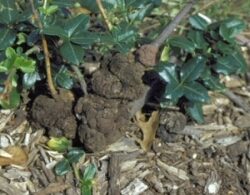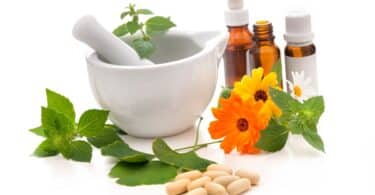RadkoTichavsky is a Czech born Mexican Agrohomeopath. He is a co-founder and director of Instituto Comenius in Mexico and author of Handbook of Agrohomeopathy, 2007 (Spanish) and Homeopathy for Plants, 2009 (Spanish), Organon de la Holohomeopatíaand creator and teacher of Holohomeopathy.
Agrohomeopathy Course!
 RadkoTichavsky is now offering a one semester virtual course in Agro homeopathy (in English). You can learn how to define and analyze holons and how to repertorize the specific homeopathic treatment beyond just disease or pest names. You can find out more here: www.icomenius.edu.mx
RadkoTichavsky is now offering a one semester virtual course in Agro homeopathy (in English). You can learn how to define and analyze holons and how to repertorize the specific homeopathic treatment beyond just disease or pest names. You can find out more here: www.icomenius.edu.mx
NEW BOOK:
Organon de la Holohomeopatía – Six years in the making, it is the latest book by RadkoTichavsky, researcher on the application of homeopathy in agriculture. This Spanish language book covers homeopathic interventions in agriculture from the holistic view, allowing greater certainty in repertorizations. It addresses a novel concept of metabolic similarity, not only among plants, but also among different species of the animal and plant kingdom.It studies the formation and dynamics of attractors, areas of greater vitality within the holons and coexistence units of different living organisms. Holohomeopathy is a fascinating contribution to the application of homeopathy to plants. It allows one to discover a universe of surprising relations in vital dynamism. It puts into the hands of the agricultural producer a valuable tool for the successful handling of pests and diseases in crops of any size. For ordering or information: [email protected]
Dear Mr. Tichavsky,
We have a small plot in Trenton New Jersey (08601) where we grow vegetables. Last year our lettuce crop was damaged by Downy Mildew (BremiaLactucae). We saw the white and yellow coloring (which subsequently became brown). The climate is moderate, going from around 85 F in the summer to the low 20 F in the winter. Rainfall is moderate but sometimes there are longer periods of rain. Can you suggest how we might avoid this problem in the next plaining season?
Thank you
Harriet Stein
RadkoTichavsky:
Dear Harriet,
Bremialactucae reproduces mainly in combination with moisture and the absence of ultraviolet rays. To control this disease of rapid course it is important not to use sprinkler irrigation, but if it is used, it should be applied when climatic conditions allow the leaves to dry well before the sunset. The use of resistant varieties can also help, but only temporarily, because the fungus has great plasticity that allows it to overcome quickly the resistances if the humidity conditions are favorable. Crop rotation is also important, i.e. exchange crops regularly in the same growing area. I also recommend a solarization of the crop area every three years: cover the crop beds with black plastic and leave them under strong sun for two or three weeks.
The homeopathic remedies useful for the control of lettuce mildew are Daucus carota (86 metabolites common with lettuce and 43 of them have antifungal properties) elaborated from the seeds and roots at 6 CH potency, Cinnamonumverum (39 common metabolites) at 6 CH, Borax, Natrum fluoricum, and also Equisetum arvense (34 metaboilites common and 11 of them fungicides) at 6 CH. All the remedies have to be applied with olive oil as adjuvant.
[hr]
Dear Sir,
I want to know how to prepare fertilizer from the used flowers. We have lots of flowers that become useless after the worship, which we are throwing into the river running water. I shall be glad if you give us a way to utilize these flowers for preparing fertilizer.
Thank you
L K Sharma [email protected]
RadkoTichavsky:
Dear LK Sharma, you should know exactly what type of flowers they are in order to be able to elaborate a suitable formulation. As a general principle we must take into account that if we prepare any remedies from the flowers it will have a predominant action on the flowers of the plants when we apply the remedy made from them.This is due to the hormonal content (remember that the flowers are sexual organs of the plants). When we elaborate vegetable fertilizers (from plants and their parts) it is important to achieve that mixture in water with addition of molasses. It has to be made and to pass through a rigorous process of microbial action. When the bacteria take action, there are numerous bubbles and abundant foam on the surface of the mixture. In addition, it is necessary to help the proliferation of the aerobic bacteria by removing the mixture manually or enriching by means of aerators (for example those that are used in aquariums). The duration of the process depends on the material, amount of molasses, temperature and degree of oxygenation. Then the liquid is filtered, taking advantage of the solid parts to elaborate compost, and from the liquid part microdoses are prepared for its application as fertilizer.
Last but not least, it is very important to know about the origin and treatments of the flowers used, since if agrotoxics were applied on them, this content will also contaminate the crops where the fertilizer would be applied.
[hr]
Greetings Mr. Tichavksy,
I tried growing carrots for the first time in 2018 and they developed Root Knot Nematodes. There was nothing to do for them by the time I realized it but I’d like to plant this year. Do I have to sterilize the soil somehow due to the previous infestation? What might I do to avoid the problem happening again? I live in Baltimore, Maryland on the East coast of the U.S. (zip code 21225). We rarely get extremes of weather. Monthly rainfall is from 3 – 4 inches.
Thank you
Gerald
RadkoTichavsky:
Hi Gerard,
The presence of nematodes is generally due to the high content of heavy metals in the soil and occurs also in soils with a too much of a clay structure.Carrots grow well in well-drained soils, so you can add some river sand to your soil to improve drainage. As for the presence of heavy metals in the soil, this can be reduced by applying chelators, for example sap of Opuntia ficusindica (66 metabolites common with carrot) or sap of Aloe vera (23 metabolites common with carrot), applied in microdoses (dilution in water 1:40). You can additionally apply tea compost. It is necessary to avoid vermicompost, since this one frequently presents high content of heavy elements and equally it is necessary to avoid the fertilization with artificial fertilizers, since these also present traces of heavy elements.
As for homeopathic remedies for nematode problems in carrot crops, you can apply Piper nigrum 4 CH (it has 90 metabolites common with Daucus carota and contains 22 nematicidal substances) and Rosmarinus officinalis 6 CH (it has 23 metabolites in common with carrots and contains 18 nematicidal substances) sprayed on the soil or incorporated into the irrigation water with sap of Opuntia ficusindica as an adjuvant.
It is very useful to maintain an alternation of crops and not to cultivate the carrot in consequent periods in the same place. You can alternate for example with chard or spinach one period, and cabbages or beans in the next period, before returning again with the carrot cultivation.
[hr]
Sir,
Can I increase organic carbon in the soil through agrohomeopathy? Also, what are the sources of nitrogen supplying plants? I live in Nagpur district,Vidarbha area in the state of Maharashtra, India, where the average rainfall is 700 mm, summer is very hot, up to 47-48 C, winter is cold, down to 6C.
Regards
SurjyotiBagchi, India
RadkoTichavsky:
Dear Surjvoti,
In general it can be said that all plants in a fresh state (green) are a rich source of nitrogen and all dry leaves are a source of carbon. By carrying out rigorous mulching on your soils, dry leaves in a state of decomposition will add the necessary amount of carbon. In addition, there are plants especially rich in nitrogen such as those belonging to the families Cucurbitacea and Brassicacea, but also the Acacias spp., nettle, lettuce or beans are important sources of nitrogen. Another way to add carbon to the soil is to make microdoses of ash. First cool the ash and place it in a cloth sack and let it float for five days in a river (to lower its alkalinity). Then the washed ash is collected, crushed in a stone mortar and this powder is diluted in water and applied over the areas where you want to add the carbon.
A balanced soil must have adequate amounts of nitrogen and carbon, the excess of one or the other element will produce nutritional imbalances.
It is important to say that homeopathy does not replace the nutrition of crops, even when homeopathy can modify the nutritional balance, if nutrients are present but are not bioavailable.For example: if you apply Carbo vegetabilis at low potency (eg 6 CH) it adds to the soil and plants small amounts of carbon, but if you apply Carbo vegetabilis at potency 30 CH it will drain and decrease the amount of carbon in the soil and in plants.
In addition, the elements among themselves have antagonisms and synergies.Among the bestknown carbon antagonists are silica, manganese, magnesium and to a lesser degree calcium, sulfur, zinc, copper, nickel or iron (elements that share at least one valence in common or have the same ion diameter.)
In this way the availability of carbon in the soil is not equal to the amount of carbon in the soil. Its availability depends on the configuration of quantities of the other elements.
Although the main source of carbon for plants is found in the air, an adequate presence and availability of carbon in the soil directs and significantly influences soil aeration, the presence of beneficial microorganisms and the nutritional availability of the other elements.
[hr]
Hello Mr. Tichavsky,
My wife grew green peppers on the roof in wooden boxes that I built for her. She ended up with a lot of peppers. At one point, aphids took over. The plants were literally covered in aphids We tried to find ladybugs which are a natural predator of aphids, but there were none around. What’s the best way to deal with these little critters? We live in Florida Dade City, Florida (33526). Florida is warm all year long, with average temps being 55-90 F. Rainfall is between 3-7 inches a month.
Many thanks
Brian and Chris
RadkoTichavsky:
Dear Brian and Chris,
The presence of aphids is mainly due to the attraction of soft tissues in plants. For example, plants with a nutritional excess of nitrogen and a calcium deficiency produce an excessive growth of the plants, but with very soft epidermis, and this facilitates the work of sucking insects such as aphids.

Aphids
The important homeopathic remedy in this case is Calcareacarbonica 6 CH sprayed foliarly with olive oil as an adjuvant, in periods of three weeks to harden the epidermis of the plants. The aphids can even appear in the crop but they will not be able to penetrate the skin of the plant with its stiletto, which resembles more the trunk of elephant than a needle.That is to say, it requires soft tissues to penetrate and attacks mainly young sheets. Natural enemies of aphids include many types of coleoptera Harmonia axyridis or Hippodamia convergens for example, but also Aphidius sp. a species of parasitoid wasps and some neuropteros (Chrysoperla sp. and Chrysopasp. ).

Harmonia axyridis -adult

Larvae of Harmonia
To attract the beneficial and antagonistic insects to the Aphids you can prepare a bionosode of live aphids at potency 6 CH and disperse it in the crop. To attract the Harmonia axyridis for example you can apply Pinus (with 41 metabolites common with Capsicum sp.) at the potency 6 CH made from the resin of any pine, as it contains Alpha-pinene and Beta-pinene, two semiochemics that are powerful attractors of the H. axyridis. If you want to specifically attract Aphidius spp. you can apply Thymus 6 CH containing geraniol a powerful attractor of Aphidius sp.
Another possibility is to place two or three basil plants interspersed with the peppers plants, as they also contain geraniol which attracts the natural enemies of the Aphids.
Plants and insects “speak and understand” the homeopathic language perfectly, and when they receive the right signal, they come to the aid of your crops, as if they were attracted by the force of a magic magnet.






